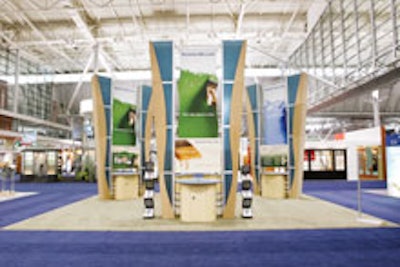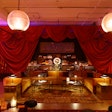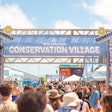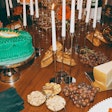
booth
Thanks to a burgeoning green products industry, there are plenty of eco-friendly options for trade show booths, from nontoxic paint to sustainable building materials. The challenge is sorting through them all to find what really works, while remembering to consider important factors like transportation and reusability.
Sherwin-Williams created its first eco-friendly trade show booth with Gallo Displays in Cleveland, Ohio, for the American Institute of Architects’ National Convention and Design Exposition in May 2008. Gallo used recycled aluminum framing and Plyboo, a wood alternative derived from bamboo. Although pleased with the results, the company made different choices when designing an exhibit for the January 2009 International Builders Show in Las Vegas. This booth was made primarily of BioBoard, a wood alternative made from recycled materials, with Plyboo and PaperStone (panels made of recycled paper) for counters.
It can be tough to find products that are as sturdy as they are eco-friendly. “Work closely with your 3-D marketing partner to do a lot of research in terms of all that is out there,” says Tresa Makowski, director of trade communications for Sherwin-Williams. “Some things might sound good, but you want to make sure that they are durable and work in terms of the construction process. A good company will help you work through that.”
Even if a product is eco-friendly, planners say it is important to note other environmentally detrimental factors, like whether it requires a lot of shipping. For the Solar Panel International Conference last year in San Diego, Mitsubishi Electric worked with Signal Hill, California-based Bowman Design Group to create a green booth inspired by a Japanese Zen garden, complete with rocks, sand, and moving water. “We used eco-sensitive fabric and low-V.O.C. [volatile organic compounds] inks for the graphic panels, aluminum frames, which are recyclable, and tatami mats in the conference rooms, which are natural,” says marketing communications manager Jenean Smith. “There were other eco-friendly options we could have chosen, but many of them have trade-offs. For example, bamboo is fast-growing, but is often shipped from China.”
Last year, the sports, entertainment, and conventions division of professional services company Aramark retired its 10-year-old booth for something newer and greener to debut at the International Association of Assembly Managers convention in Anaheim, California. “We wanted to create more space and better visual sight lines, and felt it was important to [make the booth] environmentally sustainable,” says director of marketing Jami Leveen. Aramark worked with Glassboro, New Jersey-based Certainly Wood Inc. and Belcamp, Maryland-based Acer Exhibits to construct a 20- by 30-foot exhibit space with recycled aluminum, Kirei (building materials made from sorghum straw), and formaldehyde-free regrown domestic birch plywood. They also reduced the amount of lighting to consume less energy. The old booth didn’t go to waste, either: Parts of it went to other divisions of the company for use in other exhibits.
“When you’re doing something green, there is an investment required. But over the long term you will see savings, whether it reduces shipping, or water, or electricity,” Leveen says. “Sometimes people lose sight of that fact because they don’t want to pay anything up front. But you have to look at the long-term investment.”



















